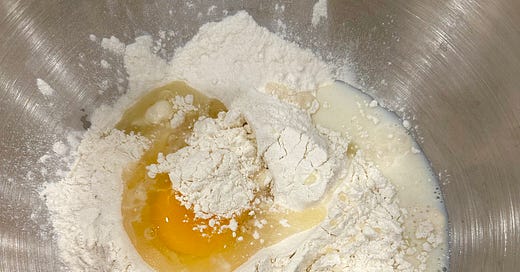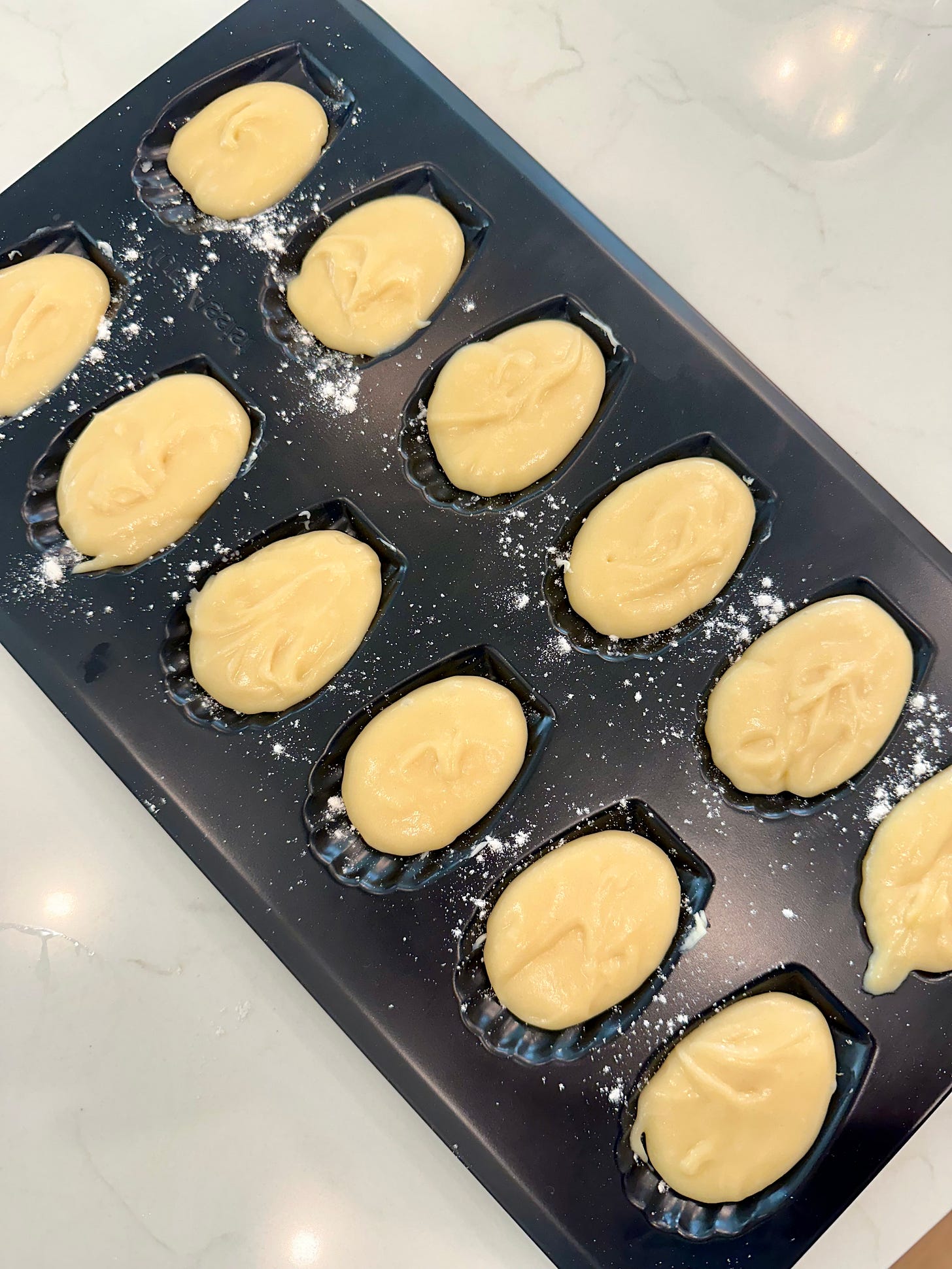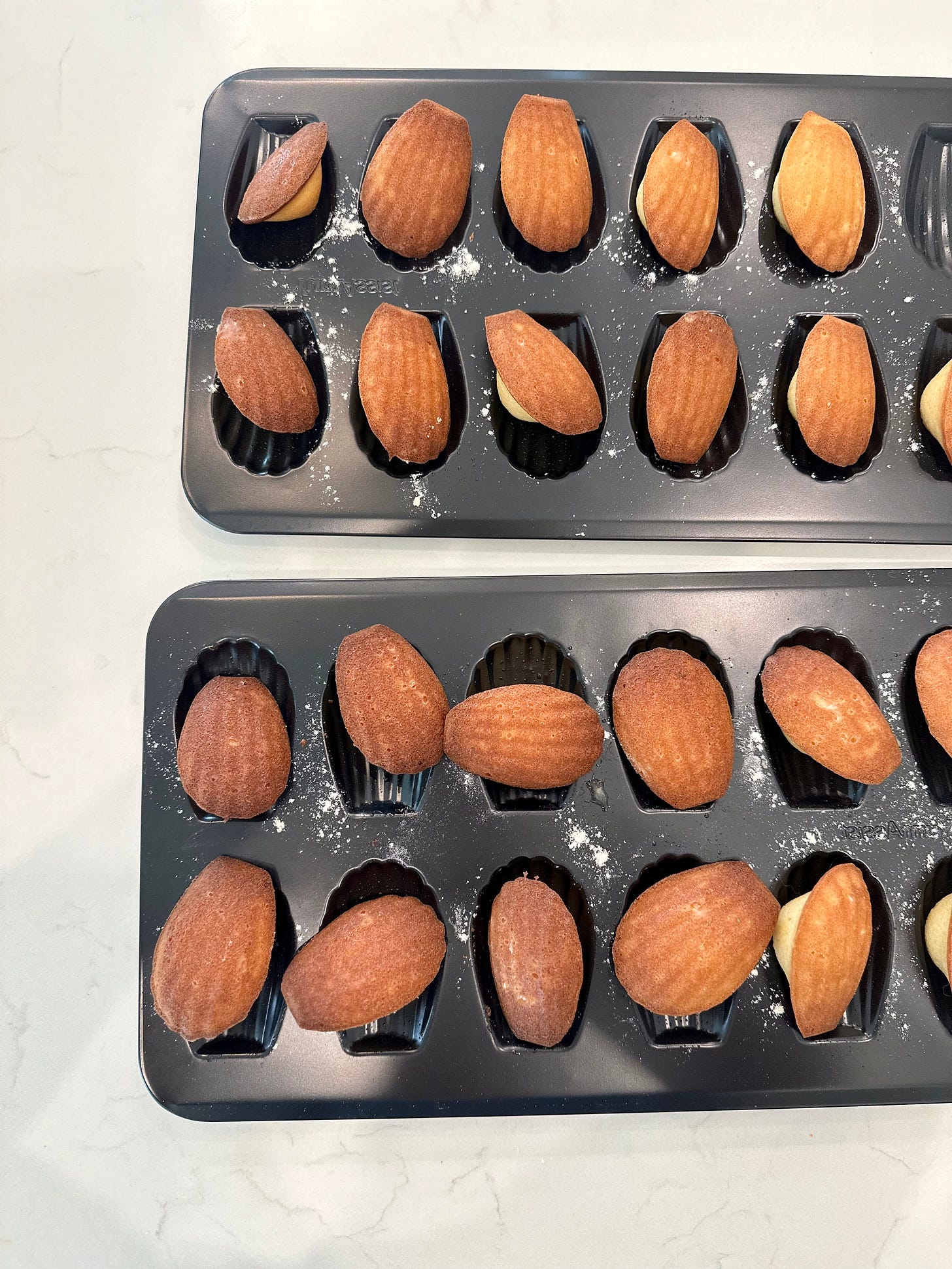When I began my baking journey I dove into a world of flour varieties. Let me tell you, there are many.
When I made French madeleines for the first time I remember using a generic all-purpose flour from the grocery store. It didn’t quite hit the mark in terms of authentic flavor. I reminisced about the amazing baked goods I ate in France and instinctively thought about the softness of the dough, the “melt in your mouth” feeling of a perfectly-baked brioche, and how incredibly digestible it felt compared to American baked goods. I went to Central Market here in Austin, TX and bought 1.5kg of Francine French flour. Excitedly I whipped up another batch of madeleines, this time with French flour. Wow, what a game-changer! The aroma of warm madeleines fresh from the oven brought back memories of the boulangeries and pâtisseries in Paris.
I knew I was onto something so I explored further. I began to research flour varieties and the differences between industrially grown U.S. wheat and French-grown wheat. I found some very surprising data!
Please note: The information shared in this post specifically compares large industrial American and French mills and does not apply to organic or local mills in the United States. Smaller, local mills, particularly those that focus on organic or artisanal production, often have different practices and may not use the chemical additives mentioned here. They are committed to producing high-quality flour, free from unnecessary additives, and typically emphasize the same traditional methods as French mills.
Wheat Varieties
Though both countries harvest wheat, the type of wheat is different. In France, soft wheat is the most widely grown cereal. Soft wheat lends to a softer texture when baked and generally has a lower protein content which impacts the amount of gluten-forming potential. Lower protein produces less gluten and a more tender structure. Those who are gluten-free might be surprised to realize they often experience less digestive discomfort when visiting France since French baked goods are typically made with flour that has a lower gluten content.
Hard red wheat is the primary source of flour in the United States. It also has a higher protein content than soft wheat and a high amount of gluten-forming ability. This is great for breads like sourdough which require a strong gluten structure.
Milling
Generally speaking, French flour is more finely milled than its American counterpart.
The combination of soft wheat and finely milled results in a more tender softer crumb as opposed to a courser (relatively speaking) milled hard wheat which develops a denser crumb.
Chemicals
It is against French regulations to use bleach or bromate as additives in flour. In the United States bromate and bleach are allowed and sometimes encouraged in industrial flour production. Though both agents whiten the flour and shorten the aging process, bromate strengthens the dough requiring less mixing time, enhances volume, and extends the shelf life. The downside? It’s a potential carcinogen and therefore banned in the European Union. Bleach on the other hand is purely applied to whiten the flour and potentially accelerate the aging process. The result is a softer texture and lighter color. Again, the downside? You need chemical agents like chlorine dioxide, chlorine gas or benzoyl peroxide to achieve that. The result is a chemically altered natural product with a bitter aftertaste.
In France, flour is not bleached nor does it use additives such as bromate. They allow the flour to age naturally and organically without modifying its inherent nature. This allows the flour to develop complex flavors and retain its nutritional value. There is a deep respect for food purity and culinary traditions, emphasizing quality ingredients and time-honored preparation methods.
In contrast, the United States allows a wide range of chemical additives and food alterations, which can impact both the taste and nutritional value of food. However, this is often not the case with smaller, local millers who have direct relationships with farmers and are committed to producing high-quality, minimally processed flour. These chemicals are usually not allowed by organic millers in the United States, making it even more important to build a relationship with your local miller. This ensures that you are getting the best quality, free from unwanted additives and chemicals.
Classifications
French flour is classified by a “T” for type followed by the ash content, where a sample of flour is taken from a batch and burned to see what percentage of minerals (ash) is left. The higher the number, the more germ and bran remain.
The three most common categories are:
T45: Superfine white flour, used for pastries and delicate baking, similar to cake flour
T55: Standard white flour, used for baguettes and general baking, similar to all-purpose flour
T65: Slightly more whole grain than T5, used for artisan and rustic breads
T80, T110, and T150 have higher ash contents and whole grains, and can be used for a variety of bread recipes.
American flour is classified by protein content which impacts gluten formation.
The most common classifications for American flour are:
Cake Flour (6-8% protein): Soft, low-gluten flour for cakes and pastries
Pastry Flour (8-9% protein): Used for tender baked goods like croissants and pie crusts
All-Purpose Flour (10-12% protein): Versatile, used for most baking needs
Bread Flour (12-14% protein): High gluten, used for a variety of breads
Whole Wheat Flour (13-14% protein): Contains bran and germ for more fiber and nutrition
High-Gluten Flour (14-15% protein): Used for bagels and chewy breads
Flavor
French flour has a mild, complex and more natural, nuttier taste. They also have older varieties of wheat like Blé de Population or Blé Rouge de Bordeaux (one that I’ve used often), that have a beautiful subtle but distinct flavor. Naturally leavened breads work wonderfully with French flour as the slow fermentation allows natural flavors to develop in sourdough breads. Since it is less processed it retains more of an authentic wheat taste and because of the lower gluten content, they are also easier to digest.
In contrast, the U.S. has focused on high-gluten, high-yield wheat varieties that prioritize production over flavor and digestibility. The added chemical agents contribute to a more neutral flavor, lacking the depth and character of less processed flours.
After tasting and baking with both flours, I found that French flour offers a unique depth of tradition, flavor, and texture that adds a special quality to baked goods. While American flour has its own strengths like efficiency and extended shelf life, French flour provides a distinct experience that elevates the overall baking process.
What have you baked or cooked with French flour? Share your experience and let’s talk about it!








yum those madeleines look so good!!
Thanks that’s so useful!🩶